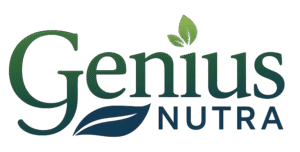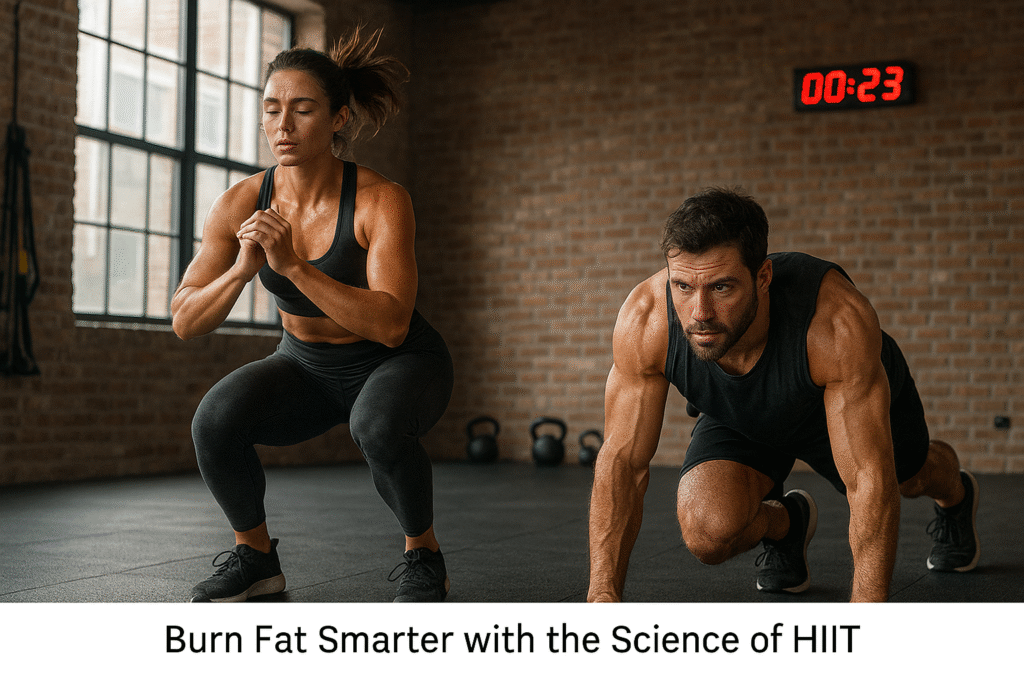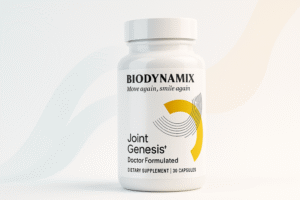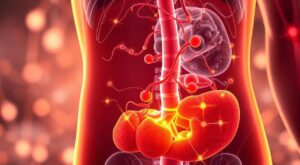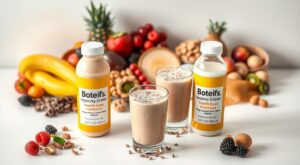The Science Behind HIIT: Burn Fat Faster is more than just a headline—it’s a proven fitness strategy supported by research and real-world results. High-Intensity Interval Training (HIIT) has revolutionized the fitness world, offering a faster, more efficient way to burn fat, boost endurance, and improve overall health.
But what exactly makes HIIT so effective for fat loss? And why do so many fitness experts and scientists recommend it over conventional workout routines? In this article, we’ll dive deep into the science behind HIIT, explore how it accelerates fat burning, and reveal practical strategies to maximize your results. Get ready to learn why HIIT could be your ultimate shortcut to a fitter, leaner body!
The Science Behind HIIT: Burn Fat Faster
1: How HIIT Triggers Fat Loss at the Cellular Level
High-Intensity Interval Training (HIIT) does more than just make you sweat—it triggers profound changes at the cellular level that accelerate fat loss. One of the key players in this process is your mitochondria, often referred to as the “powerhouses” of your cells.
The Role of Mitochondria and Energy Production
When you perform HIIT workouts, your body demands rapid bursts of energy. To meet this need, your cells’ mitochondria step up production, burning stored fat more efficiently for fuel. Over time, HIIT not only increases the number of mitochondria in your cells (a process called mitochondrial biogenesis) but also improves their efficiency. This means your body becomes better at utilizing fat as an energy source, even when you’re at rest.
How HIIT Enhances Metabolic Flexibility
Metabolic flexibility refers to your body’s ability to switch between using carbohydrates and fats for energy depending on availability and demand. HIIT enhances this flexibility by training your body to quickly adapt to high-intensity bursts followed by periods of recovery. As a result, you burn fat more effectively during workouts and throughout the day, optimizing your body’s fat-burning potential long after your session is over.
2: The Afterburn Effect (EPOC): Burning Calories Even After You Stop

One of HIIT’s most fascinating benefits is its ability to keep your body burning calories long after your workout ends, thanks to a phenomenon known as the afterburn effect, or Excess Post-Exercise Oxygen Consumption (EPOC).
What Is EPOC and Why It Matters
EPOC refers to the increased rate of oxygen intake following intense exercise. After a HIIT session, your body works overtime to restore itself to its resting state, replenishing oxygen stores, repairing muscle tissue, and clearing lactic acid buildup. This recovery process requires energy, meaning you continue burning calories even while you rest. Studies show that HIIT can elevate your metabolic rate for up to 24 hours post-exercise, offering a significant advantage over traditional, steady-state cardio.
How to Maximize the Afterburn with HIIT
To fully harness the afterburn effect, intensity is key. Your workouts should push you close to your maximum effort during work intervals—typically around 80% to 95% of your maximum heart rate. Short, explosive movements like sprints, burpees, and jump squats are particularly effective. Additionally, incorporating full-body exercises and minimizing rest between sets can amplify EPOC, helping you maximize fat burning for hours after your workout ends.
3: Comparing HIIT to Steady-State Cardio for Fat Burning
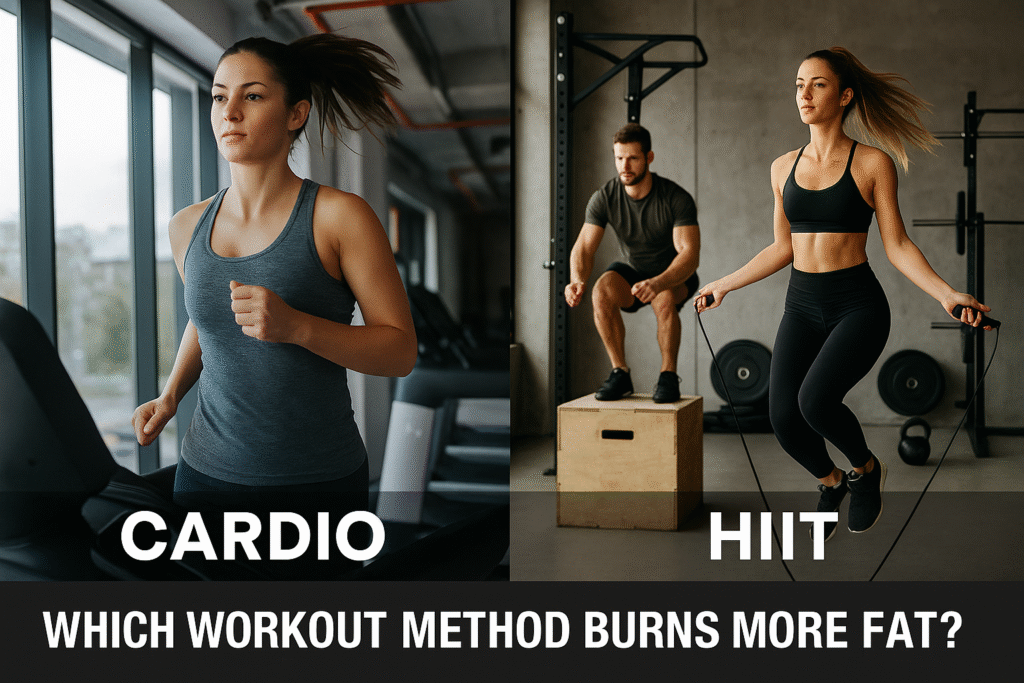
When it comes to burning fat, not all workouts are created equal. Comparing High-Intensity Interval Training (HIIT) with steady-state cardio reveals important differences in how each method affects fat loss and overall fitness.
Scientific Studies: HIIT vs. Traditional Cardio
Multiple studies have confirmed that HIIT can outperform traditional steady-state cardio in promoting fat loss. For example, a study published in the Journal of Obesity found that participants engaging in HIIT lost significantly more body fat compared to those doing continuous moderate-intensity exercise, despite spending less total time exercising. HIIT stimulates greater post-exercise calorie burn (EPOC), promotes muscle retention, and improves both aerobic and anaerobic fitness levels—all key factors in sustainable fat loss.
Which Method Fits Your Fitness Goals Best?
While HIIT is highly effective, it’s not the perfect fit for everyone. If your primary goal is rapid fat loss, improved cardiovascular health, and time efficiency, HIIT is ideal. However, steady-state cardio might be better suited for beginners, those recovering from injuries, or individuals who prefer a less intense approach. Ultimately, the best choice depends on your fitness level, goals, and personal preference—and in many cases, combining both methods can offer the best results.
4: Common Mistakes People Make When Doing HIIT

While HIIT is a powerful fat-burning tool, many people make mistakes that can hinder progress or even lead to injury. Understanding these common pitfalls can help you get the most out of your workouts safely and effectively.
Overtraining and Recovery Issues
Because HIIT is intense by nature, doing it too frequently without proper recovery can lead to burnout, fatigue, and even hormonal imbalances. Many beginners are tempted to train hard every day, thinking more is better—but recovery is just as important as the workout itself. Your muscles need time to rebuild and adapt. Ideally, HIIT should be performed 2 to 4 times per week, depending on your fitness level, with adequate rest days in between.
Choosing the Wrong Exercises or Intensity
Not all movements are suitable for HIIT. Some people mistakenly include slow, low-intensity exercises that don’t generate enough demand to activate the afterburn effect. Others go too hard too soon, risking form breakdown and injury. The key is to choose compound, full-body exercises like jump squats, mountain climbers, or kettlebell swings—movements that get your heart rate up fast and challenge multiple muscle groups. Also, ensure you’re pushing near your max during work intervals, but maintaining proper form at all times.
5: Crafting the Perfect HIIT Workout for Maximum Fat Loss
Creating an effective HIIT routine doesn’t require fancy equipment or complicated programming. What matters most is structure, intensity, and consistency. A well-designed HIIT workout can help you torch fat, boost cardiovascular fitness, and improve muscle tone—all in under 30 minutes.
Sample HIIT Routine for Beginners and Advanced Levels
Beginner Routine (20 minutes):
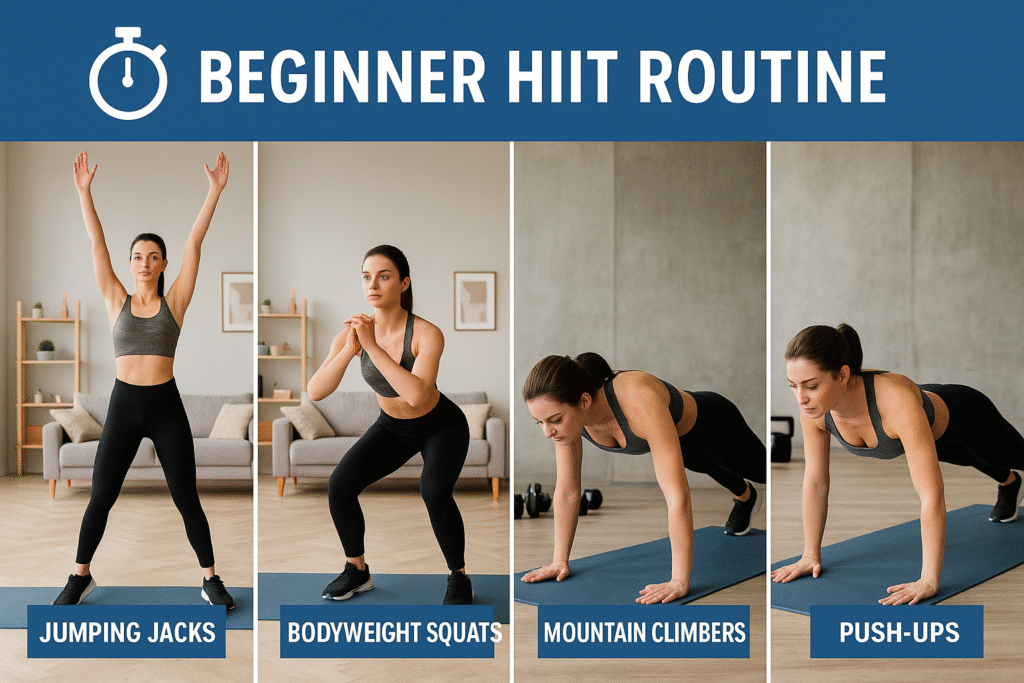
- 30 seconds jumping jacks
- 30 seconds rest
- 30 seconds bodyweight squats
- 30 seconds rest
- 30 seconds mountain climbers
- 30 seconds rest
- 30 seconds push-ups
- 30 seconds rest
Repeat 3–4 rounds
Advanced Routine (25–30 minutes):
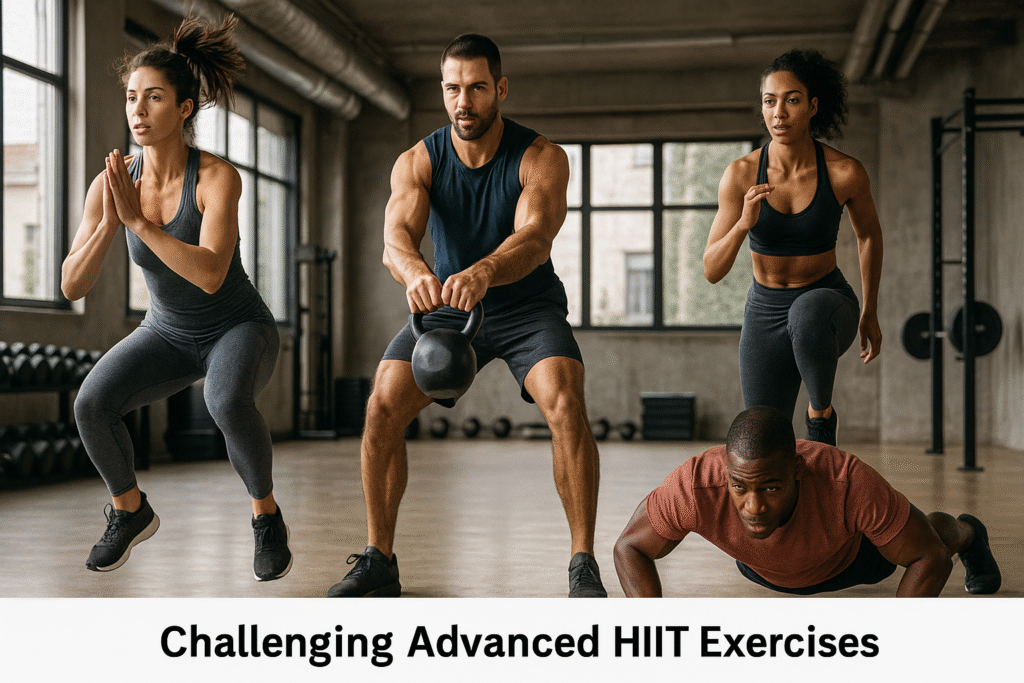
- 40 seconds jump squats
- 20 seconds rest
- 40 seconds kettlebell swings or burpees
- 20 seconds rest
- 40 seconds high knees
- 20 seconds rest
- 40 seconds push-up to shoulder tap
- 20 seconds rest
Repeat 4–5 rounds
Tips to Stay Consistent and See Results
- Set realistic goals and track your progress weekly.
- Warm up and cool down properly to avoid injury.
- Fuel your body with protein and complex carbs to support recovery.
- Mix it up every few weeks to avoid plateaus and keep things fun.
- Listen to your body—rest is part of the plan, not a setback.
Consistency beats perfection. You don’t need to be perfect every day, just committed over time.
To explore a variety of effective exercises that enhance fat loss, check out our article on the 10 Best Exercises for Rapid Weight Loss.
Quick Tip:
Don’t skip your rest intervals. They’re what allow you to hit max effort in the next round—and that’s where real fat burning happens.
Conclusion
High-Intensity Interval Training isn’t just a fitness trend—it’s a science-backed method proven to accelerate fat loss, improve metabolic health, and deliver results in less time. By understanding how HIIT works at the cellular level, leveraging the afterburn effect, and avoiding common mistakes, you can unlock its full potential.
Whether you’re new to HIIT or looking to refine your routine, consistency and smart programming are key. Stick with it, challenge yourself, and you’ll be amazed by how much progress you can make—in both performance and body composition. Now that you know the science behind HIIT, it’s time to put it into action.
✅ Further Recommendation: Support Your Metabolism with Mitolyn
If you’re serious about optimizing your metabolism and cellular performance—both key to getting the most out of HIIT—consider adding Mitolyn to your routine.
This advanced supplement is designed to enhance mitochondrial function, boost energy production, and support fat metabolism at the cellular level.
👉 Read our full review of Mitolyn here
👉 Or visit the official website to learn more
